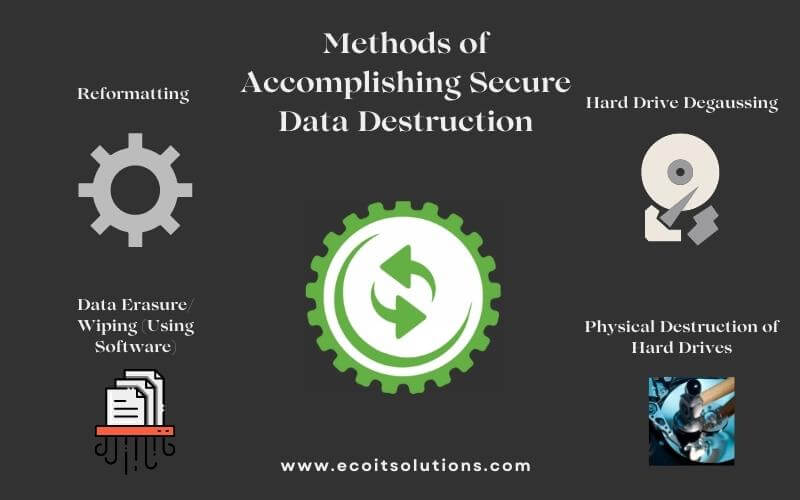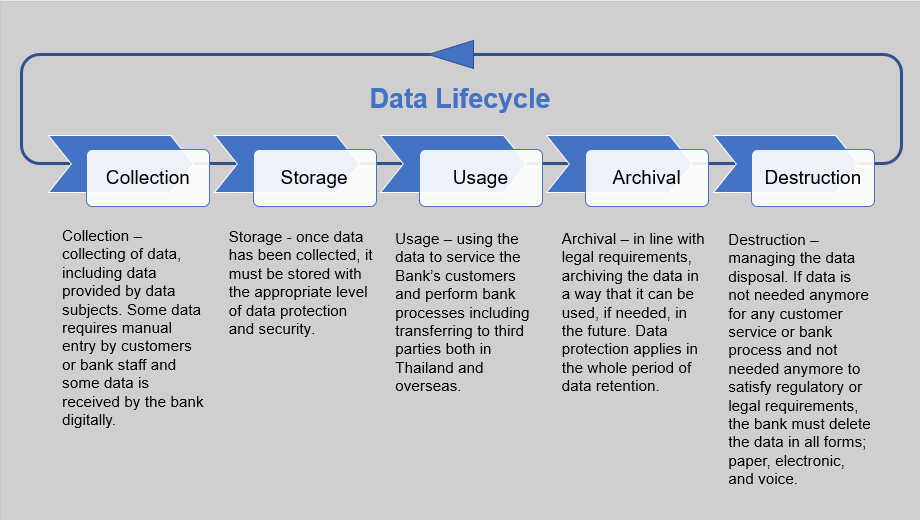Why Data Destruction is an Essential Component of Comprehensive Cyber Security
Why Data Destruction is an Essential Component of Comprehensive Cyber Security
Blog Article
The Significance of Effective Data Destruction Practices in Shielding Sensitive Details and Ensuring Computer System Protection
In an age where information breaches are significantly usual, the relevance of reliable information damage practices can not be overstated. Carrying out durable data damage approaches not just reduces these dangers yet also lines up with lawful conformity requirements, making certain that organizations support their credibility and foster customer trust.
Comprehending Information Damage
Understanding data devastation is vital in today's electronic landscape, where sensitive details can easily be jeopardized. Reliable data devastation includes not merely ensuring but erasing data that information is irretrievable through detailed approaches. This process is important for organizations that take care of personal customer details, copyright, or inner documents, as any breach can result in serious financial and reputational effects.
Information destruction includes various strategies, including shredding physical media, degaussing magnetic storage devices, and utilizing software-based options that overwrite information several times. Each approach serves a details objective and should line up with the sensitivity of the info being dealt with. For example, physical damage is usually preferred for disk drives consisting of very personal information, while software methods might be enough for less sensitive info.
In addition, sticking to market criteria and guidelines, such as the General Information Security Law (GDPR) or the Medical Insurance Transportability and Responsibility Act (HIPAA), is essential for conformity and to reduce legal risks. Organizations should establish a robust information destruction policy, train workers on finest techniques, and regularly investigate their procedures to ensure that all sensitive details is dealt with safely and effectively.
Risks of Inadequate Practices
Insufficient information destruction methods subject companies to significant threats that can have significant consequences. When sensitive info is not effectively disposed of, it continues to be at risk to unauthorized accessibility, which can result in information breaches and identity theft. Such cases not only compromise the safety of people however additionally taint the company's online reputation, causing a loss of consumer trust fund and potential monetary effects.
Furthermore, governing compliance is progressively stringent in lots of sectors. Failure to stick to information devastation regulations can lead to substantial fines and lawsuits versus organizations. These penalties can stress funds and draw away interest from core organization procedures.
On top of that, the abuse of recurring data can cause copyright burglary or corporate espionage, endangering affordable benefits (data destruction). The effect of insufficient data damage prolongs beyond immediate economic losses; it can also result in lasting damage to brand integrity and market position

Organizations must identify that information safety is not exclusively regarding avoiding violations; it also includes the responsible administration of information throughout its lifecycle. Ignoring effective data devastation methods can have catastrophic ramifications, underscoring the need for robust steps to mitigate these threats.
Best Practices for Data Devastation
Applying effective data damage methods is essential for safeguarding delicate information and keeping conformity with regulatory criteria. Organizations needs to take on a multi-faceted method to make sure that data is irretrievable, consequently stopping unauthorized accessibility and possible violations.
First, data ought to be classified based upon level of sensitivity, enabling companies to apply appropriate destruction approaches customized to the level of risk. For electronic data, making use of software-based data-wiping tools pop over to this site that follow industry standards can properly great site overwrite existing information. Physical devastation approaches, such as shredding or degaussing, are crucial for gadgets that save sensitive info, making sure complete eradication.
Developing a clear information retention plan is crucial, describing exactly how long various sorts of details need to be kept before destruction. Normal audits of information storage systems are likewise needed to identify outdated or unnecessary information needing elimination.
Furthermore, training workers on the value of information damage and the certain methods to comply with fosters a culture of security within the organization. Maintaining documentation of information devastation processes gives accountability and sustains conformity with outside policies and inner plans. By adhering to these best techniques, companies can considerably reduce the risks related to information direct exposure.
Legal and Conformity Factors To Consider

Failing to abide by these policies can cause extreme penalties, including considerable fines and reputational damage. Organizations has to execute a durable data destruction plan that straightens with these lawful structures and offers clear standards on the appropriate techniques of information disposal, whether physical shredding or digital cleaning.
In addition, preserving documentation of data damage tasks is important for demonstrating conformity throughout audits or assessments. By focusing on legal and conformity factors to consider, companies can boost their information safety and security pose and foster trust fund with clients and stakeholders, my explanation inevitably adding to a more protected information administration setting.
Benefits of Effective Information Damage
Reliable data devastation techniques extend past mere conformity; they use significant advantages to organizations that prioritize them. By making certain that sensitive info is irretrievably ruined, organizations alleviate the risk of information violations and the possible economic consequences connected with them. This proactive approach not only safeguards against unauthorized accessibility but likewise enhances the overall reliability of the company in the eyes of stakeholders and clients.
Implementing robust data destruction methods, such as physical destruction of storage gadgets or sophisticated data cleaning techniques, adds to the conditioning of a company's cybersecurity stance. data destruction. It minimizes the chance of intellectual home burglary and secures exclusive information, thereby keeping a competitive edge out there

Verdict
To conclude, efficient data damage techniques are important for guarding delicate information and improving total computer protection. By implementing detailed approaches such as shredding, software, and degaussing overwriting, organizations can mitigate the dangers related to unapproved access and information violations. Adherence to regulatory standards, including GDPR and HIPAA, further reinforces conformity and safeguards against legal consequences. Inevitably, a dedication to durable information damage methods promotes a society of obligation, consequently enhancing an organization's cybersecurity position and maintaining customer trust fund.

Report this page